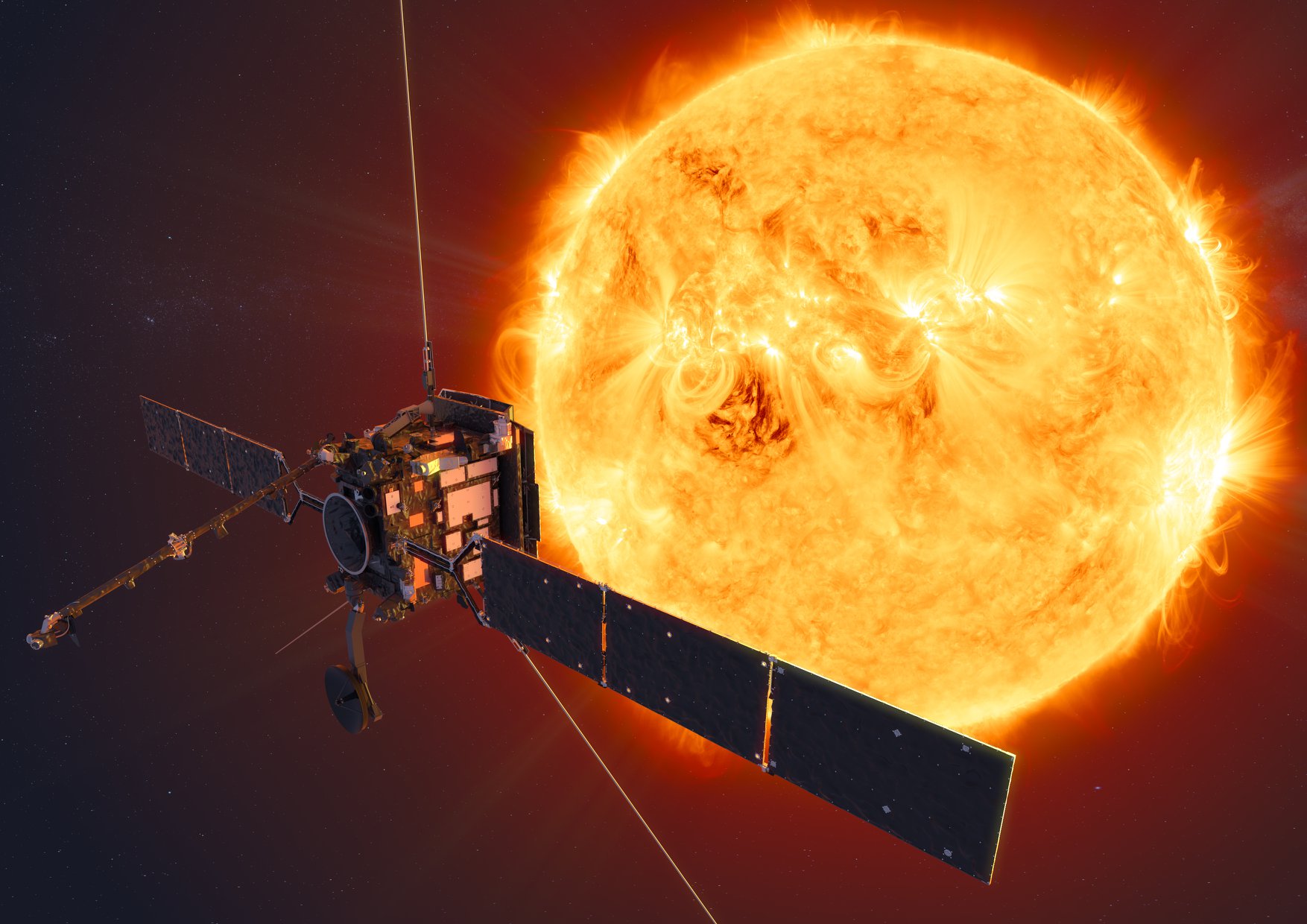Coordination between new ground-based and space-borne solar telescopes will allow the Sun to be studied in unprecedented ways. Dr. Jose Carlos Del Toro Iniesta, from Instituto de Astrofísica de Andalucía IAA-CSIC (Granada, Spain), talks about the opportunities of collaboration between EST and Solar Orbiter.

Artistic representation of Solar Orbiter approaching the Sun / Image: ESA
We are living a golden era for solar physics. With the deployment of state-of-the-art, ground-based telescopes like DKIST and EST, the battery of instruments we have on Earth will increase its power and potentialities by orders of magnitude. With such instruments, we are going to observe tiny solar features hitherto unexplored. The various layers of the Sun will be analyzed with unprecedented detail. In particular, the magnetic field will be observed with great precision in all three layers of the solar atmosphere. Moreover, the capabilities of getting rid of the Earth’s atmospheric perturbations by our fleet of spacecraft, currently monitoring the Sun with stable conditions, provide complementary observations.
The scientific community realized two important aspects that were essential and uncovered with the present instruments, namely, remotely sounding the Sun far from the ecliptic and connecting the physics of the Sun with that of the inner heliosphere through simultaneous measurements. Observing from a sufficiently inclined vantage point is crucial to understand the magnetic field at the poles and, in particular, its behavior when the solar cycle changes. Combining remote sensing observations with in-situ measurements of particles and waves simultaneously obtained by a spacecraft flying close to the Sun will shed light on the origins of all the relevant phenomena for our life on Earth which were originated in the Sun. ESA, in collaboration with NASA, conceived the Solar Orbiter mission to fulfil these two missing aspects among other objectives.
Images and spectra taken at the extreme ultraviolet and X-ray domains of the spectrum or coronal images will be valuable to help EST to point to relevant targets when Solar Orbiter is almost aligned with Earth. When close to quadrature (Solar Orbiter-Sun-Earth angle of the order of 90º), the first stereoscopic magnetic field and velocity measurements will be available. Those observations will help resolve a 180º ambiguity in the vector magnetic field azimuth and to better constrain the vector velocity of the plasma. When in opposition (Solar Orbiter facing the opposite side of the Sun), we will have a first-ever view of the global magnetic field of the Sun. These are just a few examples of the many collaborations we can envisage between the European Solar Telescope and Solar Orbiter. Imagine how many can be listed when including other spacecrafts in orbit and other telescopes on ground.
